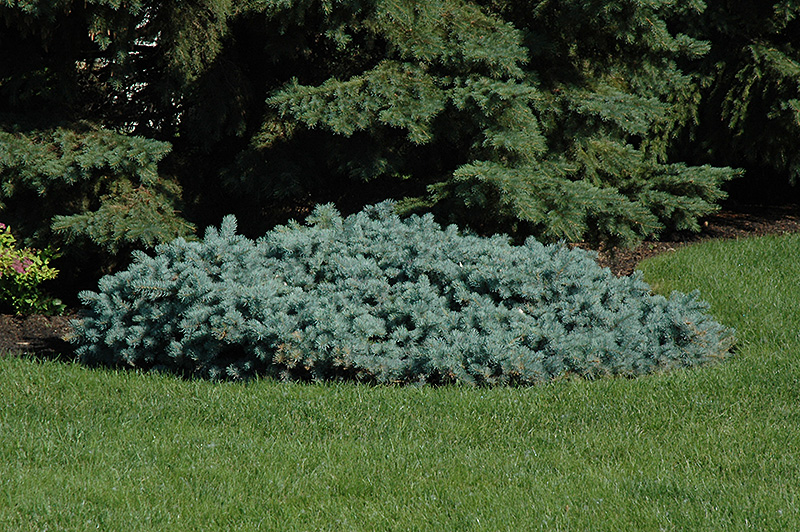Digging deeperPlant Library
St. Mary's Broom Creeping Blue Spruce
Picea pungens 'St. Mary's Broom'
Height: 18 inches
Spread: 24 inches
Sunlight:
![]()
![]()
Hardiness Zone: 2
Other Names: Blue Colorado Spruce;Colorado Blue Spruce
Description:
This may be the finest groundcover blue spruce available; forms a dense, spreading mound of steel-blue needles that creeps to fill in an area, holds its color exceptionally well; an exciting alternative to run-of-the-mill spreading junipers
Ornamental Features
St. Mary's Broom Creeping Blue Spruce is a dwarf conifer which is primarily valued in the garden for its broadly spreading habit of growth. It has attractive steel blue evergreen foliage which emerges silvery blue in spring. The needles are highly ornamental and remain steel blue throughout the winter.
Landscape Attributes
St. Mary's Broom Creeping Blue Spruce is a dense multi-stemmed evergreen shrub with a ground-hugging habit of growth. Its average texture blends into the landscape, but can be balanced by one or two finer or coarser trees or shrubs for an effective composition.
This is a relatively low maintenance shrub. When pruning is necessary, it is recommended to only trim back the new growth of the current season, other than to remove any dieback. It has no significant negative characteristics.
St. Mary's Broom Creeping Blue Spruce is recommended for the following landscape applications;
- Mass Planting
- Rock/Alpine Gardens
- General Garden Use
- Groundcover
Planting & Growing
St. Mary's Broom Creeping Blue Spruce will grow to be about 18 inches tall at maturity, with a spread of 24 inches. It tends to fill out right to the ground and therefore doesn't necessarily require facer plants in front. It grows at a slow rate, and under ideal conditions can be expected to live for 60 years or more.
This shrub does best in full sun to partial shade. It prefers dry to average moisture levels with very well-drained soil, and will often die in standing water. It is not particular as to soil type or pH, and is able to handle environmental salt. It is highly tolerant of urban pollution and will even thrive in inner city environments. This is a selection of a native North American species.
A NetPS Plant Finder tool
This Plant Library is for informational purposes only. We may or may not carry the items listed. During many times of the year, we may carry many more plants in our store than are listed in the Plant Library. Please contact us directly at 303-690-4722 or visit our store for current availability and for assistance.

